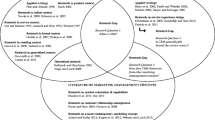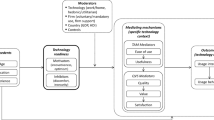Abstract
This article examines the link between recovery time and customer compensation expectations for service failures that cannot be immediately redressed. First, we show that the relationship between recovery time and compensation expectations is nonlinear. Initially, in a recovery time zone of tolerance, compensation expectations do not increase. Beyond this zone, the relationship follows an inverted U-shape, such that compensation expectations first increase but decrease in the long run. Second, our results show that long recovery times are accompanied by additional negative effects, including lower satisfaction with the recovery and negative word of mouth, so postponing service recovery represents a poor option. Third, relationship strength functions as a moderator. First-time customers expect higher compensation earlier; relational customers display a recovery time zone of tolerance but claim considerably higher compensations afterwards. Fourth, communication initiatives like the separate provision of status updates or an explanation may limit increases in compensation expectations over time. Still, their joint usage creates a “too-much-of-a-good-thing” effect, suggesting that if the usage of communication initiatives is taken too far it may lead to negative outcomes such as increasing compensation expectations.



Similar content being viewed by others
Notes
All datasets were collected from a Western European country that is part of the European Union. They are representative of the population of this country.
A replication in an online retailing (n = 117) context offers robust support for the direct effect of recovery time on compensation expectations (F2, 113 = 5.594; p < 0.01; ANCOVA). Contrast analyses also confirm the pattern of means (MImmediate = 23.50 vs. M1Week = 27.04; F1, 113 = 0.850; ns; MImmediate = 23.50 vs. M4Weeks = 35.77; F1, 113 = 10.632; p < 0.01; M1Week = 27.04 vs. M4Weeks = 35.77; F1, 113 = 5.092; p < 0.05).
To check the robustness of the recovery time zone of tolerance, we calculated further multistep hierarchical regressions with different timeframes (i.e., immediate to ten days; immediate to eight days; immediate to five days; eight days to eight weeks). All regressions support the finding that compensation expectations do not increase significantly within the recovery time zone of tolerance but do so after.
Slightly different from Study 2a, we find a significant negative cubic effect (B = −0.002, SE = 0.001, p < 0.05; see Web Appendix D) of recovery time on compensation expectations when conducting the regression over all 12 recovery times. At first sight, the negative cubic effect might imply a curve that is first U-shaped and then inverted U-shaped. A closer look at Fig. 3, Panel B, instead reveals that the results within the recovery time zone of tolerance (i.e., immediate to one week) do not decline significantly, as supported by the regression analysis for this separate range of recovery time. The main aim of Study 2b was to identify additional negative effects of longer recovery times, so we decided to focus our discussion on the effects within and outside the recovery time zone of tolerance.
References
Adams, J. S. (1965). Inequity in social exchange. In L. Berkowitz (Ed.), Advances in experimental social psychology (Vol. 2, pp. 267–299). New York: Academic Press.
Adams, J. S., & Freedman, S. (1976). Equity theory revisited: Comments and annotated bibliography. In L. Berkowitz & E. Walster (Eds.), Advances in experimental social psychology (Vol. 9, pp. 43–90). New York: Academic Press.
Bonifield, C., & Cole, C. A. (2008). Better him than me: Social comparison theory and service recovery. Journal of the Academy of Marketing Science, 36, 565–577.
Boshoff, C. (1997). An experimental study of service recovery options. International Journal of Service Industry Management, 8, 110–130.
Bougie, R., Pieters, R., & Zeelenberg, M. (2003). Angry customers don’t come back, they get back: The experience and behavioral implications of anger and dissatisfaction. Journal of the Academy of Marketing Science, 31, 377–393.
Cambra-Fierro, J., Melero, I., & Sese, F. J. (2015). Managing complaints to improve customer profitability. Journal of Retailing, 91, 109–124.
Chan, K. W., Yim, C. K. B., & Lam, S. S. K. (2010). Is customer participation in value creation a double-edged sword? Evidence from professional financial services across cultures. Journal of Marketing, 74, 48–64.
Chebat, J., & Slusarczyk, W. (2005). How emotions mediate the effects of perceived fairness on loyalty in service recovery situations: An empirical study. Journal of Business Research, 58, 664–673.
Customer Rage Survey (2015). An independent study of customer complaint-handling experiences. Retrieved March 23, 2016 from http://research.wpcarey.asu.edu/marketing/customer-rage-costs-202-billion-in-repeat-sales/
Davidow, M. (2003). Organizational responses to customer complaints: What works and what doesn’t. Journal of Service Research, 5, 225–250.
de Matos, C. A., & Rossi, C. A. V. (2008). Word-of-mouth communications in marketing: A meta-analytic review of the antecedents and moderators. Journal of the Academy of Marketing Science, 36, 578–596.
DeWitt, T., & Brady, M. K. (2003). Rethinking service recovery strategies. The effect of rapport on consumer responses to service failure. Journal of Service Research, 6, 193–207.
DeWitt, T., Nguyen, D. T., & Marshall, R. (2008). Exploring customer loyalty following service recovery. The mediating effects of trust and emotions. Journal of Service Research, 10, 269–281.
Flatscher-Thöni, M., Leiter, A. M., & Winner, H. (2013). Pricing damages for pain and suffering in court: The impact of the valuation method. Journal of Empirical Legal Studies, 10, 104–119.
Fornell, C., & Larcker, D. F. (1981). Evaluating structural equation models with unobservable variables and measurement error. Journal of Marketing Research, 18, 39–50.
Gelbrich, K. (2010). Anger, frustration, and helplessness after service failure: Coping strategies and effective informational support. Journal of the Academy of Marketing Science, 38, 567–585.
Gelbrich, K., Gäthke, J., & Grégoire, Y. (2015). How much compensation should a firm offer for a flawed service? An examination of the nonlinear effects of compensation on satisfaction. Journal of Service Research, 18, 107–123.
Grégoire, Y., & Fisher, R. J. (2008). Customer betrayal and retaliation: When your best customers become your worst enemies. Journal of the Academy of Marketing Science, 36, 247–261.
Grégoire, Y., Tripp, T. M., & Legoux, R. (2009). When customer love turns into lasting hate: The effects of relationship strength and time on customer revenge and avoidance. Journal of Marketing, 73, 18–32.
Grewal, D., Roggeveen, A., & Tsiros, M. (2008). The effect of compensation on repurchase intentions in service recovery. Journal of Retailing, 84, 424–434.
Gwinner, K., Gremler, D., & Bitner, M. J. (1998). Relational benefits in service industries: The customer’s perspective. Journal of the Academy of Marketing Science, 26, 101–114.
Hayes, A. F. (2015). An index and test of linear moderated mediation. Multivariate Behavioral Research, 50, 1–22.
Hess, R. L., Ganesan, S., & Klein, N. M. (2003). Service failure and recovery: The impact of relationship factors on customer satisfaction. Journal of the Academy of Marketing Science, 31, 127–145.
Hogreve, J., Iseke, A., Derfuss, K., & Eller, T. F. (2017). The service profit chain: A meta-analytic test of a comprehensive theoretical framework. Journal of Marketing, 81, 41–61.
Homans, G. C. (1961). Social behavior: Its elementary forms. New York: Harcourt, Brace & World.
Homburg, C., Koschate, N., & Hoyer, W. D. (2005). Do satisfied customers really pay more? A study of the relationship between customer satisfaction and willingness to pay. Journal of Marketing, 69, 84–96.
Houston, M. B., Bettencourt, L. A., & Wenger, S. (1998). The relationship between waiting in a service queue and evaluations of service quality: A field theory perspective. Psychology and Marketing, 15, 735–753.
Jones, M. A., Reynolds, K. E., Mothersbaugh, D. L., & Beatty, S. E. (2007). The positive and negative effects of switching costs on relational outcomes. Journal of Service Research, 9, 335–355.
Katz, K. L., Larson, B. M., & Larson, R. C. (1991). Prescription for the waiting-in-line blues: Entertain, enlighten, and engage. Sloan Management Review, 32, 44–53.
Keh, H. T., & Pang, J. (2010). Customer reactions to service separation. Journal of Marketing, 74, 55–70.
Kumar, V., Zhang, X. A., & Luo, A. (2016). Modeling customer opt-in an opt-out in a permission-based marketing context. Journal of Marketing Research, 51, 403–419.
Larivière, B., & Van den Poel, D. (2005). Investigating the post-complaint period by means of survival analysis. Expert Systems with Applications, 29, 667–677.
Liao, H. (2007). Do it right this time: The role of employee service recovery performance in customer-perceived fairness and customer loyalty after service failures. Journal of Applied Psychology, 92, 475–489.
Maister, D. H. (1985). The psychology of waiting lines. In J. A. Czepiel, M. R. Solomon, & C. F. Surprenant (Eds.), The service encounter: Managing employee/customer interaction in service businesses (pp. 113–123). Lexington: Lexington Books.
Mattila, A. S. (2001). The impact of relationship type on customer loyalty in a context of service failures. Journal of Service Research, 4, 91–101.
Maxham, J. G. (2001). Service recovery’s influence on consumer satisfaction, positive word-of-mouth, and purchase intentions. Journal of Business Research, 54, 11–24.
Maxham III, J. G., & Netemeyer, R. G. (2002). A longitudinal study of complaining customers’ evaluations of multiple service failures and recovery efforts. Journal of Marketing, 66, 57–71.
Mostafa, R. B., Lages, C. R., Shabbir, H. A., & Thwaites, D. (2015). Corporate image: A service recovery perspective. Journal of Service Research, 18, 468–483.
Osuna, E. E. (1985). The psychological cost of waiting. Journal of Mathematical Psychology, 29, 82–105.
Palmatier, W. P., Dant, R. P., Grewal, D., & Evans, K. R. (2006). Factors influencing the effectiveness of relationship marketing: A meta-analysis. Journal of Marketing, 70, 136–153.
Pierce, J. R., & Aguinis, H. (2013). The too-much-of-a-good-thing effect in management. Journal of Management, 39(2), 313–338.
Preacher, K. J., & Hayes, A. F. (2008). Asymptotic and resampling strategies for assessing and comparing indirect effects in multiple mediator models. Behavior Research Methods, 40, 879–891.
Roschk, H., & Gelbrich, K. (2014). Identifying appropriate compensation types for service failures: A meta-analytic and experimental analysis. Journal of Service Research, 17, 195–211.
Smith, A. K., Bolton, R. N., & Wagner, J. (1999). A model of customer satisfaction with service encounters involving failure and recovery. Journal of Marketing Research, 36, 356–372.
Tax, S. S., Brown, S. W., & Chandrashekaran, M. (1998). Customer evaluations of service complaint experiences: Implications for relationship marketing. Journal of Marketing, 62, 60–76.
Taylor, S. (1994). Waiting for service: The relationship between delays and the evaluation of service. Journal of Marketing, 58, 56–69.
Walster, E., Berscheid, E., & Walster, W. (1973). New directions in equity research. Journal of Personality and Social Psychology, 25, 151–176.
Wills, T. A. (1981). Downward comparison principles in social psychology. Psychological Bulletin, 90, 245–271.
Wirtz, J., & Mattila, A. S. (2004). Consumer responses to compensation, speed of recovery and apology after a service failure. International Journal of Service Industry Management, 15, 150–166.
Zeithaml, V. A., Berry, L. L., & Parasuraman, A. (1993). The nature and determinants of customer expectations of service. Journal of the Academy of Marketing Science, 21, 1–12.
Zhao, X., Lynch, J. G., & Chen, Q. (2010). Reconsidering baron and Kenny: Myths and truths about mediation analysis. Journal of Consumer Research, 37, 197–206.
Zhou, Y., Tsang, A. S. L., Huang, M., & Zhou, N. (2014). Does delaying service-failure resolution ever make sense? Journal of Business Research, 67, 159–166.
Acknowledgments
The thank Dwayne D. Gremler and the attendees of the invited Thought Leaders in Service Marketing Strategy Conference for their valuable feedback on prior versions of this article. The authors also thank the Editors and the anonymous reviewers for their constructive comments. Nicola Bilstein thanks the German Research Foundation (DFG) for financial support (grant BI 1763/1-1). This project was a team effort, with all researchers contributing equally.
Author information
Authors and Affiliations
Corresponding author
Electronic supplementary materials
ESM 1
(DOCX 58 kb)
Rights and permissions
About this article
Cite this article
Hogreve, J., Bilstein, N. & Mandl, L. Unveiling the recovery time zone of tolerance: when time matters in service recovery. J. of the Acad. Mark. Sci. 45, 866–883 (2017). https://doi.org/10.1007/s11747-017-0544-7
Received:
Accepted:
Published:
Issue Date:
DOI: https://doi.org/10.1007/s11747-017-0544-7




